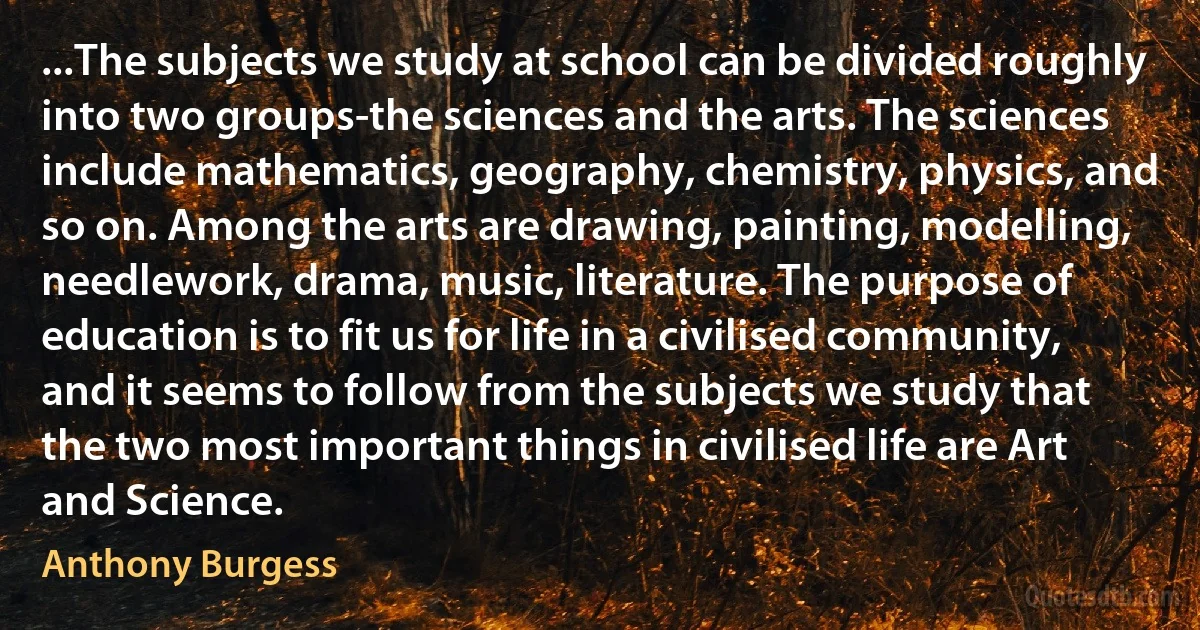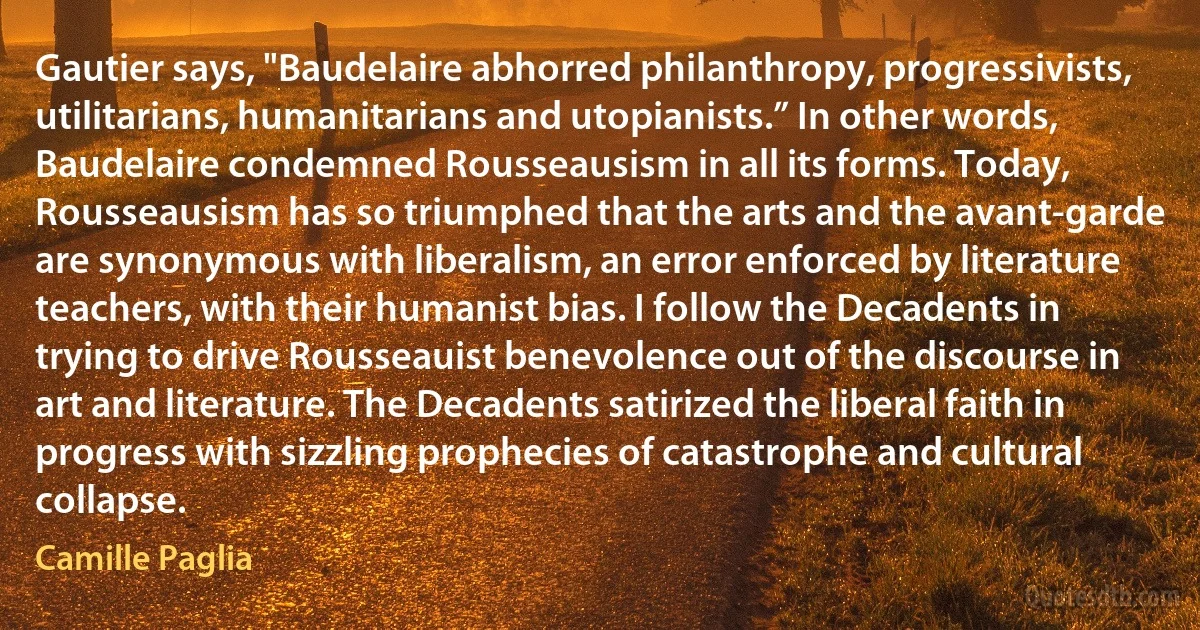Arts Quotes - page 18
In the case of a novel, or any imaginative work, especially if the tone is poetic, my own preference is for ending with a touch of symbolism which shall leave the reader brooding. A fine novel, a well-written story, "proves" nothing. Certain characters have played their parts, life goes on, and the final passage may be allowed to remain with one foot in the air, as is the case with some of Chopin's conclusions. But there is no absolute rule in such matters, and there are epic novelists who like to end on a powerful crescendo, as Ravel does in Bolero, or Dvorak in the New-World Symphony. Composition has features which are common to all the arts, and the author can learn as much about his business in the concert hall as in the library.

André Maurois
Thus, whether it be wit or beauty that a man's in love with, there are no great hopes of a lasting happiness; beauty, with all the helps of arts, is of no long date; the more it is, the sooner it decays; and he, who only or chiefly chose for beauty, will in a little time find the same reason for another choice.

Mary Astell
Perhaps the first fire, the first tool, the first wheel, the first carving in a limestone cave, had each possessed a symbolic rather than a practical value, had each been pressed to serve distortion rather than reality. It was a sort of madness that had driven man from his humble sites on the edges of the woods into towns and cities, into arts and wars, into religious crusades, into martyrdom and prostitution, into dyspepsia and fasting, into love and hatred, into this present cul-de-sac; it had all come about in pursuit of symbols. In the beginning was the symbol, and darkness was over the face of the Earth.

Brian Aldiss
A powerful critical talent who destroyed his own sense of proportion, Leavis was our brush with totalitarianism: we caught it as a mild fever instead of the full attack of meningitis. His career was the clearest possible proof that the course the arts take is not under the control of criticism.

F. R. Leavis
So long as we have government by party, the very notion of repose must be foreign to English politics. Agitation is, so to speak, endowed in this country. There is a standing machinery for producing it. There are rewards which can only be obtained by men who excite the public mind, and devise means of persuading one set of persons that they are deeply injured by another. The production of cries is encouraged by a heavy bounty. The invention and exasperation of controversies lead those who are successful in such arts to place, and honour, and power. Therefore, politicians will always select the most irritating cries, and will raise the most exasperating controversies the circumstances will permit.

Robert Gascoyne-Cecil, 3rd Marquess of Salisbury
The good taste we speak of, which is that of literature, is not limited to what we call the sciences, but extends itself imperceptibly to other arts, such as architecture, painting, sculpture, and music. 'Tis the same discerning faculty which introduces universally the same elegance, the same symmetry, and the same order in the disposition of the parts; which inclines us to a noble simplicity, to natural beauties, and a judicious choice of ornaments. On the other hand, the depravation of taste in arts has been always a mark and consequence of the depravation of taste in literature. ... The good taste of literature reaches also to public customs, and the manner of living. An habit of consulting the best rules upon one subject, naturally leads to the doing it also upon others.

Charles Rollin
ARTS is a somewhat conservative magazine but it is not uniformly, simply or blindly conservative, and the several conservative writers vary. And I am certainly not a conservative and neither is Miss Harrison. I decidedly disagree with the basic positions of Mr. Kramer, Miss Raynor and Mr. Tillim, though not with some of their evaluations, both of conservative and nonconservative artists. I think Ben Johnson's paintings, for example, are relatively uninteresting and powerless and that the work of some of the dop artists is full of true emotion. uninteresting and powerless and that the work of some of the dop artists is full of true emotion. The conservatism of Mr. Kramer and Mr. Mellow as successive editors lies only in the publication of more articles on conservative artists than on unconservative ones. Neither editors ever suggested to me that the magazine should have a uniform position or attempt to control my reviews, which are often contrary to Mr. Kramer's opinions.

Donald Judd
In Etruria.. the nation stagnated and decayed in political helplessness and indolent opulence, a theological monopoly in the hands of the nobility, stupid fatalism, wild and meaningless mysticism, the arts of soothsaying and mendicant priestcraft gradually developed themselves, till they reached the height at which we afterwards find them.

Theodor Mommsen
The "music of decline" had sounded, as in that wonderful Chinese fable; like a thrumming bass on the organ its reverberations faded slowly out over decades; its throbbing could be heard in the corruption of the schools, periodicals, and universities, in melancholia and insanity among those artists and critics who could still be taken seriously; it raged as untrammeled and amateurish overproduction in all the arts.

Hermann Hesse
With respect to the homosocial/homosexual style, it seems to be possible to divide Victorian men among three rough categories according to class. The first includes aristocratic men and small groups of their friends and dependents, including bohemians and prostitutes; for these people, by 1865, a distinct homosexual role and culture seem already to have been in existence in England... It seems to have constituted a genuine subculture, facilitated in the face of an ideologically hostile dominant culture by money, privilege, internationalism, and for the most part, the ability to command secrecy... This role is closely related to - is in fact, through Oscar Wilde, the antecedent of - the particular stereotype that at least until recently has characterized American middle-class gay homosexuality; its strongest associations, as we have noted, are with effeminacy, transvestism, promiscuity, prostitution, continental European culture, and the arts.

Eve Kosofsky Sedgwick



